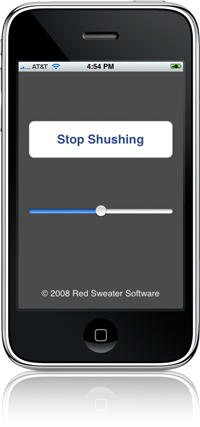The tension among iPhone developers is palpable, as hundreds of us wait anxiously for Apple to lift the NDA restrictions that prevent us from discussing development on the platform with the public, or even discussing it amongst ourselves.
It’s widely expected that the iPhone developer community will inherit this charming aspect of the Mac developer community: its insatiable desire to share techniques and code, making us all more productive and more capable of creating top-notch applications. The quality of applications on the Mac is legendary, and helps to fuel a cycle of positive feedback among and between software developers, customers, and Apple itself.
The question on more and more minds is whether the secrecy imposed by Apple will seriously threaten the speed or degree to which this kind of healthy innovative environment develops on the iPhone platform. Some suggest that innovation has already been catastrophically stunted, but I think that analysis is hyperbolic. While the AppStore is filled to the brim with titles that many people wouldn’t hesitate to classify as “junk,” there are also numerous examples of brilliant ideas brought to reality. The question isn’t so much whether the iPhone platform will thrive, but to what extent and how efficiently it will do so.
Perhaps the darkest angle of our ongoing wait for the lifting of Apple’s iPhone NDA, is that we seem to be “waiting for Godot.” The parallels to the fabled character are pretty weak, but I can’t help but think myself a fool when I observe that I, along with countless others, am waiting for a happy day which may never come.
We have to face the fact that Apple may never lift the NDA. We don’t know all of the causes or motivations for their persisting in enforcing it, and they don’t seem anxious to share. This story becomes more tragic and more comedic with each passing day, as Apple allows events that are widely perceived as violations of the NDA to go unpunished, and opens up new niches of freedom that don’t benefit the very developers who are adding the most value to the system.
Today, Apple announced a free program for student iPhone developers. This program seems to endorse learning about and discussing iPhone development in an academic environment, which is great news. The part that stings is this is a privilege which those of us in the professional world are still not convinced we have.
The announcement drove developer Craig Hockenberry of The Iconfactory to a point of protest. Craig has been publicly decrying the NDA since the AppStore opened, and alluding to a number of blog posts which he hopes to share once the NDA is lifted. Today, apparently enraged by the academic program announcement, he decided the time had come to share one of his pending blog posts, NDA be damned. Lights Off is an iPod adaptation by Lucas Newman of the popular handheld electronics game, Lights Out. Craig adapted the original to the official iPhone SDK, and has decided to publish the project’s source code.
The old phrase suggests that it may be better to ask forgiveness than to ask permission. As we stand around like buffoons, waiting for an NDA dismissal that may never happen, perhaps we should start entertaining ourselves. Regaling each other with valuable iPhone development tips and source code might help us to pass the time more easily. And in the event Godot never does arrive, we should feel slightly less foolish for having at least put our time to good use in the interim.


